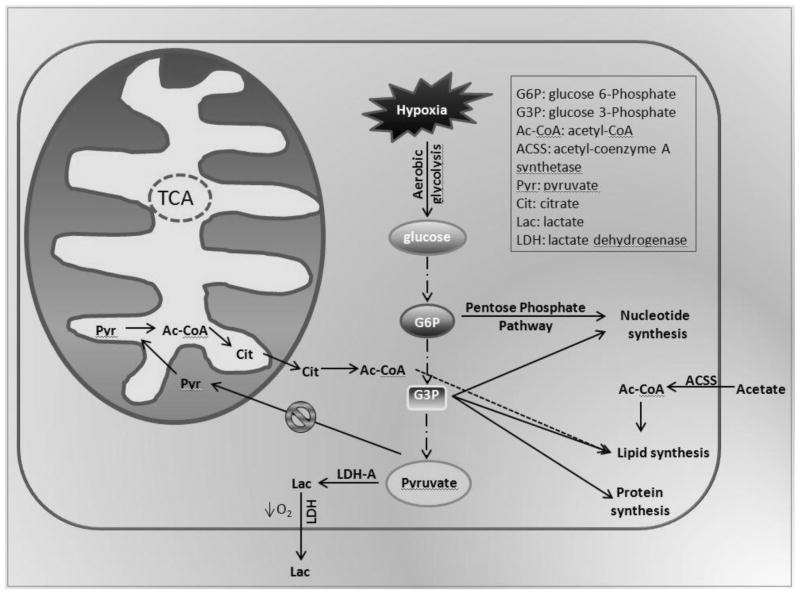Figure 3.
Illustration of key biochemical pathways that undergo metabolic derangement in GBM. Cancer cells are known to undergo a metabolic switch toward aerobic glycolysis. Under conditions of hypoxia, glucose consumption and lactate secretion are further enhanced with a concomitant decrease in OXPHOS. Although inherently less efficient than aerobic respiration, cancer cells utilize the biochemical intermediates of aerobic glycolysis, including glucose 6-phosphate and glucose 3-phosphate to produce the nucleotides, proteins and lipids required for rapid cellular proliferation. To maintain adequate pools of precursors involved in lipid and cholesterol biosynthesis, intermediates from TCA may be converted to acetyl-CoA. Due to the high demand for acetyl-CoA during lipogenesis, coupled with the decreased supply from glycolytic sources, exogenous acetate may be incorporated and converted to acetyl-CoA by acetyl-conenzyme A synthetase. This compensatory use of acetate to maintain acetyl-CoA reserves has renewed interest in ACSS inhibitors as a treatment for GBM.

